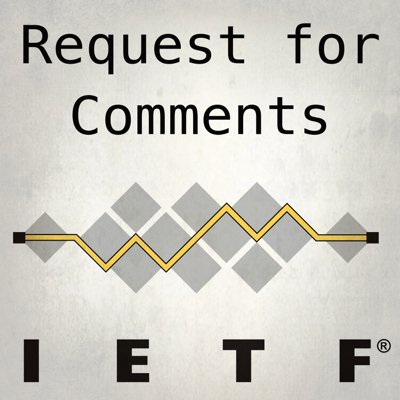Les RFC – Requests for comments
Sommaire
1 – Introduction aux RFCs
Les RFC (Requests for Comments) sont des documents officiels spécifiant les différentes implémentations, standardisations, normalisations représentant alors la définition de TcpIP. Ces documents sont utilisés par Ietf (Internet Engineering Task Force) ainsi que d’autre organismes de normalisation. Depuis 1969, plus de 3500 documents ont été rédigés. Les Rfc sont classées, selon cinq classifications qui sont obligatoire, recommandé, facultatif, limitée, non recommandé ainsi que trois niveaux de maturité qui sont standard proposé, standard brouillon, standard internet. Lorsqu’un document est publié, un numéro de RFC lui est attribué et en cas d’évolution, un nouveau document sera publié sous une autre référence.

Une RFC très intéressante relate les divers fonctionnement de toute cette partie administrative. La RFC 3160 nommé Tao de l’IETF traite des sujets tels que le processus de standardisation des RFCs, les rôles des différentes organisations, le fonctionnement interne de l’IETF et etc.
2 – Liste des RFCs
Voici la liste des différentes RFC rencontrées et référencées sur le site FrameIP.
- TAO
- ATM
- Ethernet
- PPP
- PPPOE
- PPTP
- IP
- RFC 791 – Internet Protocol
- RFC 791 fr – Internet Protocol
- RFC 815 – IP Datagram Reassembly Algorithms
- RFC 1071 – Computing the Internet Checksum
- RFC 1340 – Assigned Numbers
- RFC 1700 – Assigned Numbers
- RFC 1349 – Type of Service in the Internet Protocol Suite
- RFC 1517 – Applicability Statement for the Implementation of Classless Inter-Domain Routing (CIDR)
- RFC 1518 – An Architecture for IP Address Allocation with CIDR
- RFC 1519 – Classless Inter-Domain Routing (CIDR): an Address Assignment and Aggregation Strategy
- RFC 1631 – The IP Network Address Translator (NAT)
- RFC 1878 – Variable Length Subnet Table For IPv4
- RFC 1918 – Address Allocation for Private Internets
- IPv6
- ARP/RARP
- IGMP
- ICMP
- TCP
- RFC 793 – Transmission Control Protocol
- RFC 793-fr – Transmission Control Protocol
- RFC 896 – Congestion Control in Ip/Tcp Internetworks
- RFC 1071 – Computing the Internet Checksum
- RFC 1340 – Assigned Numbers
- RFC 1323 – TCP Extensions for High Performance
- RFC 2018 – TCP Selective Acknowledgment Options
- UDP
- DHCP
- RFC 951 – Bootstrap Protocol (Bootp)
- RFC 951-fr – Protocole d’amorçage (Bootp)
- RFC 1497 – Bootp Vendor Information Extensions
- RFC 1541 – Dynamic Host Configuration Protocol
- RFC 1542 – Clarifications and Extensions for the Bootstrap Protocol
- RFC 2131 – Dynamic Host Configuration Protocol
- RFC 2131-fr – Protocole de configuration dynamique de machine (DHCP)
- RFC 2132 – Dhcp Options and Bootp Vendor Extensions
- RFC 2132-fr – Options DHCP et Extensions fournisseur BOOTP
- IPSEC
- RFC 2401 – Security Architecture for the Internet Protocol
- RFC 2401-fr – Architecture de sécurité pour IP
- RFC 2402 – IP Authentication Header
- RFC 2406 – IP Encapsulating Security Payload (ESP)
- RFC 2408 – Internet Security Association and Key Management Protocol (ISAKMP)
- RFC 2409 – The Internet Key Exchange (IKE)
- RFC 3095 – Robust Header Compression (ROHC)
- L2TP
- DNS
- RFC 1033 – Domain adminstrators operations guide
- RFC 1034 – Domain Names – Concepts and facilities
- RFC 1034-fr – Domain Name Server (Concepts de base)
- RFC 1035 – Domain Names – Implementation and specification
- RFC 1591 – Domain Name System Structure and Delegation
- RFC 5358 – Preventing Use of Recursive Nameservers in Reflector Attacks
- SIP
- RFC 3261 – SIP: Session Initiation Protocol
- RFC 3265 – Session Initiation Protocol (SIP)-Specific Event Notification
- RFC 3853 – S/MIME Advanced Encryption Standard (AES) Requirement for the Session Initiation Protocol (SIP)
- RFC 4320 – Actions Addressing Identified Issues with the Session Initiation Protocol’s (SIP) Non-INVITE Transaction
- RFC 4916 – Connected Identity in the Session Initiation Protocol (SIP)
- RFC 5393 – Addressing an Amplification Vulnerability in Session Initiation Protocol (SIP) Forking Proxies
- RFC 2327 – SDP: Session Description Protocol
- RTP
- MPLS
- NNTP
- NTP
- SNMP
- RFC 1155 – V1 – Structure and identification of management information for TCP/IP-based internets
- RFC 1441 – v2c – Introduction to version 2 of the Internet-standard Network Management Framework
- RFC 1901 – V2 – Introduction to Community-based SNMPv2
- RFC 3411 – V3 – An Architecture for Describing SNMP Management Frameworks
- RFC 3826 – The Advanced Encryption Standard (AES) in the SNMP User-based Security Model
- SSL – TLS
- STUN
- FTP
- HTTP
- HSRP
- Divers
5 – Les vidéos
5.1 - What is the differnce between IETF and RFC

Cette vidéo en anglais vous compare IETF avec les RFCs (Requests For Comments).
5.2 - Protocol RFCs

Cette vidéo en anglais vous présente les RFCs (Requests For Comments).
5.3 - IETF Publishing an RFC

How would you go about developing and publishing a RFC ?
6 – Discussion autour des RFC – Requests for comments
Vous pouvez poser toutes vos questions, faire part de vos remarques et partager vos expériences à propos des RFC – Requests for comments. Pour cela, n’hésitez pas à laisser un commentaire ci-dessous :

Commentaire et discussion